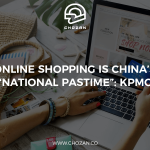These days, Chinese consumers aren’t as target-oriented and purpose-driven as they used to be when shopping in physical spaces. Since they can very quickly and easily find specific items while shopping online, they don’t go to stores with the same mindset except for grocery shopping. They care more about exploring physical locations at their leisure.
When consumers go to a shopping mall, they don’t normally go to buy specific brands. Instead, they go to have fun with their children, learn things, and have experiences like dining out or going to a movie. Despite this, physical stores haven’t yet mastered the art of creating unforgettable consumer experiences that keep consumers coming back.
New Retail, when done well, does. But what is New Retail?
New Retail, which Jack Ma defined as “the integration of online, offline, logistics and data across a single value chain.” uses technology to merge online, offline, logistics, big data, cloud computing, entertainment, news and social media into a seamless shopping experience. Ma introduced the term in 2016 along with New Technology, New Manufacturing, New Finance and New Energy.
Many of the technological advances and digital business approaches of New Retail were well underway in many other markets as far back as 2005 or earlier. Within China, JD.com and Tencent have their own versions of it which they call Boundaryless Retail and Smart Retail respectively.
It includes initiatives like omnichannel retail, experiential retail, integrated social media, click and collect, same day or one hour deliveries, unstaffed stores, fully automated warehouses and more. It enables people to, for example, purchase an item online at a discount using a code from an online influencer, pick it up from a smart locker the next day and then take it to a physical store 3 months later for repairs.
Internationally, brands and businesses that are excelling in this area include John Lewis, Waitrose, Amazon, Walmart, Carrefour, IKEA, Target, Tesco, eBay, Nike and Decathlon as well as smaller brands like Warby Parker, Orvis, Welden and Value City Furniture.
New Retail is consumer-centric and driven by data to improve a shopper’s experience and save them time and money. However, it also improves operational efficiency and results in cost savings for the retailer.
“The essence of new retail is to solve two problems: first, whether the consumer experience is improving; second, whether the operating efficiency of merchants is improving. If not, it is fake New Retail.” (新零售本质要解决两个问题,第一消费者体验是不是往上走,第二商家运行效率是不是往上走,如果不是,都是伪新零售。)
—Xiao Lihua, Vice President of Alibaba group
So, a New Retail mindset can spur brands to create unique consumer experiences, personalize shopping while collecting data to further improve service and achieve a leaner bottom line for retailers.
Now, the New Retail approach is going beyond retail to hospitals, parks and even bathrooms. Here are a few examples.
The New Reality
More and more companies are focusing on consumer-centric innovations, cashier-free technologies, mobile services and AR/VR technologies. This requires a high level of collaboration between all participants and Chinese consumers are gradually getting used to becoming co-producers and co-creators of their favorite products and services.
Meituan’s “Joint Recommendation” Function
Meituan cooperated with brands to test a new function called “Joint Recommendation”, which recommended food to users based on their preferences. At present, the function covers lots of brands, including KFC, Burger King, Pizza Hut, Yonghe King, CoCo, Häagen-Dazs and many other brands.
According to big data from Meituan, users are more willing to buy ice cream, a traditional summer best seller, if it’s priced under RMB 6. This led KFC to reduce the price of a classic ice cream flavor from RMB 6 to RMB 4.9. Sales increased and when consumers went to KFC locations to pick up their ice cream, it increased the likelihood that they would buy more food there.
KFC sold 150,000 ice cream cones in 33 days.
The world’s first intelligent bathroom
Tmall cooperated with Hangzhou Xihu Yingtai Mall to launch the world’s first intelligent bathroom. The bathroom has a Tmall retail vending machine where users can scan codes to buy personal care products. The bathrooms also have virtual makeup mirrors. “Magic Mirrors” using augmented reality and filters to show different makeup looks. If users like the look of certain makeup items, they can buy them through vending machines or order them to be delivered to their home.
Taking the pain out of car shopping
Alibaba launched “auto vending machines” with Ford in the bustling southern city of Guangzhou and plans more in the near-future. The machines, which function in a similar way to vertical elevator car parks, allow users to scan their face to get the car keys after they register and pay a deposit online.
Customers can browse car models with their app, choose the car they want to test drive, pick it up from an unmanned vending machine and drive it for up to three days. After experiencing the car in a no-pressure situation, they can make an appointment to visit a dealer if they decide to buy it.
2019’s New Trends: Social New Retail
Social New Retail focuses on private social networks and community operations. Social New Retail can take various forms. It might be a brand offering exclusive early offerings of its newest products only to customers who have a brand membership. It might be doing surveys with followers of the brand’s social media account. It could also involve special products that are created with or curated by an online influencer who controls the sales channel.
Private Social Network : These are online traffic resources that are exclusive to an individual or enterprise. For individuals, it may be their own friends and relatives. For an enterprise, it may be long-time loyal customers and other peripheral traffic. Online retailers usually choose to set up shop on large platforms such as Taobao, Tmall, and JD.com and rely on the huge traffic of these large platforms.
Community Operations : These are the constant communications with existing customers through social media groups, providing the necessary information they need and turning them into loyal customers.
As an example of a brand leveraging a private social network, cosmetic brand Perfect Diary has two retail stores in Guangzhou which see foot traffic from more than 2,000 people every day. Service assistants encourage customers to add the account of Perfect Diary’s Key Opinion Customer (KOC), Xiao Wan Zi, when they buy items in stores. If people make purchases online, they send coupons and recommend that they add their KOC as a friend so they can receive more coupons.
Xiao Wan Zi publishes 2 to 3 posts every day on her WeChat Moments about her daily life. The experience is like following posts from a friend that you trust.
Xiao Wan Zi also has her own WeChat group where she introduces different campaigns to engage with consumers, such as lucky draw campaigns, sales campaigns and live-streaming. She also has her own mini program for customer service which also functions as a kind of personal beauty coach.
Perfect Diary reaches customers easily through WeChat Moments and WeChat groups, increasing their conversion rate and repurchases.
“Confronted with new opportunities, people tend to lose out in four ways: they don’t see it coming, they turn their nose up at it, they don’t understand it, or they’re too late to adapt.” (很多人输就输在,对于新兴事物,第一看不见,第二看不起,第三看不懂,第四来不及。) —Jack Ma
In an era of rapid internet and 5G development, people can easily get loads of information from various channels. Social New Retail allows customers to build a trusted connection to a brand, decrease the effort they put into product comparisons and selection and save money by cutting down on purchases of unsuitable items.
Both New Retail and Social New Retail are surpassing traditional concepts of retail and marketing and establishing a connection between people, goods, and ideal experiences.
The future has come, and New Retail provides a new opportunity in the Chinese market.
This article <China’s New Retail is more than shopping> was originally published in China Economic Review, written by Ashley Galina Dudarenok.
To get deeper insights into Chinese social media marketing and utilizing it to serve your business, join ChoZan, a training and resources platform for Chinese social media marketers.
Please follow our official WeChat account to get more updates about the latest news, feature updates and case studies.

Share this article on your favourite social media





